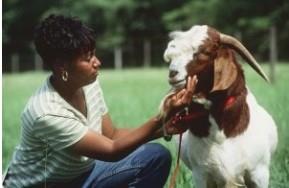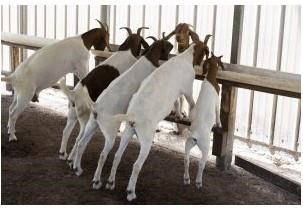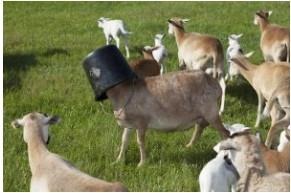By Paul Roberts
Here’s the truth: goats are super cute. When I’m stressed out, nothing calms me down faster than a visit to one of the Twitter accounts or subreddits I follow that exclusively post goat photos and videos.
Naturally, I was excited to help prepare Chris DeCubellis and Izabella Toledo’s new article What’s Involved in Caring for Dairy Goats for publication. Though this article is geared toward those youth participating in the 4-H dairy goat project, it can also function as a starting point for anyone curious about the minimum care required for a dairy goat.

This could be you
Benefits
One appealing aspect of owning a dairy goat (or goats) is the access to its milk, and the accompanying by-products such as cheese and soap, without the need for as much land as with cattle. You can use these yourself around your household, or even look into selling them at local farmers’ markets. Additionally, according to the authors, dairy goats are usually docile and trainable, making them a reasonable choice for children 8 and older to learn responsibility and care. If they’re interested, they could even show the goats at various events throughout Florida.

Care
Care
DeCubellis and Toledo’s article lists basics on how to select a goat, such as types of breed, goals for the animal, and the importance of avoiding Caprine Arthritic Encephalitis Virus (CAE). It also includes information on housing requirements for goats (much like me, goats don’t like getting wet), milking goats (twice a day, every day, and making sure to sanitize equipment and clean the goat appropriately), basic healthcare, and feeding (both what and how much). They also include a bevy of helpful resources from both UF/IFAS and other states’ Extension services

Simply majestic
As always, UF/IFAS has a suite of resources available on the subject of goats and goat health. For any other questions, just Ask IFAS!
Source : ufl.edu